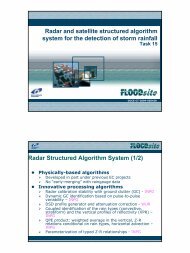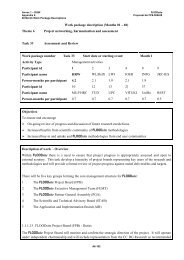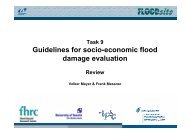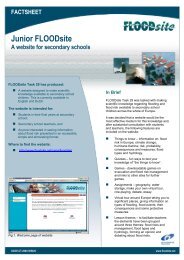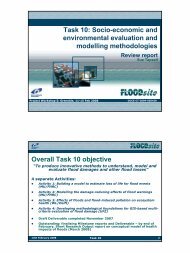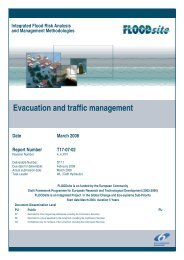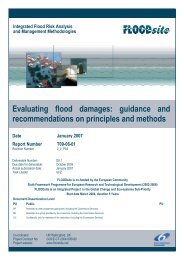Language of Risk - FLOODsite
Language of Risk - FLOODsite
Language of Risk - FLOODsite
You also want an ePaper? Increase the reach of your titles
YUMPU automatically turns print PDFs into web optimized ePapers that Google loves.
<strong>FLOODsite</strong> <strong>Language</strong> <strong>of</strong> <strong>Risk</strong> 2 nd Ed.<br />
Contract No:GOCE-CT-2004-505420<br />
When faced with uncertainty arising from a risk assessment process there are protocols for decision<br />
making that can be adopted. For example, the Precautionary Principle is a widely recognised<br />
approach. The underlying concepts <strong>of</strong> which include:<br />
• Proportionality <strong>of</strong> response or cost effectiveness <strong>of</strong> margins <strong>of</strong> error to show that the effective<br />
degree <strong>of</strong> restraint is not unduly costly. This can be implemented within benefit cost analysis<br />
whereby part <strong>of</strong> the valuation benefit is the avoidance <strong>of</strong> risk by playing safe.<br />
• Preventative anticipation to take action in advance <strong>of</strong> scientific uncertainty or acceptable<br />
evidence.<br />
• Consistency <strong>of</strong> measures. Adopted measures should be comparable with measures used in<br />
similar circumstances.<br />
• Burden <strong>of</strong> pro<strong>of</strong> is focused on those who propose change rather than those effected by the<br />
change.<br />
The Precautionary Principle does not seek to dictate a decision but enables a decision to be made<br />
when faced with significant uncertainties through adoption <strong>of</strong> a common protocol.<br />
T32_04_01_ <strong>FLOODsite</strong>_<strong>Language</strong>_<strong>of</strong>_<strong>Risk</strong>_D32_2_v5_2_P1 30 April 2009<br />
12



